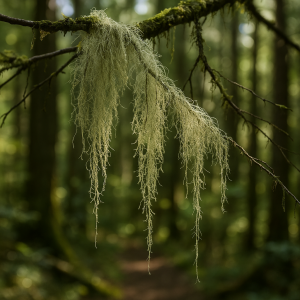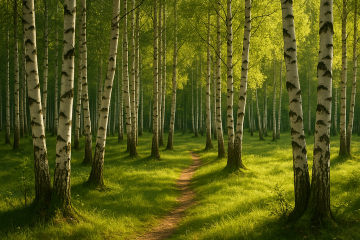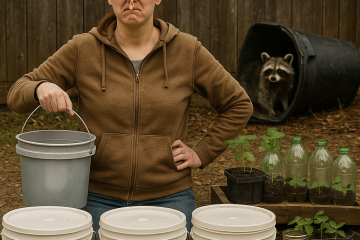
Powerful usnea!
If you’ve ever wandered through the woods and spotted what looks like Gandalf’s beard dangling from tree branches, congratulations — you’ve met Usnea. It’s that gray-green, hairlike lichen that looks like Spanish moss but is actually a powerful little partnership between algae and fungi. Picture it as nature’s odd couple: one makes the food, the other builds the house, and together they form one of the forest’s most underrated healers.
A Beard With Benefits
Usnea is not just a decorative forest fringe. It’s a potent antimicrobial, antifungal, and antibacterial powerhouse that’s been used for centuries. Think of it as the woodland version of Neosporin — only without the mystery chemicals or the neon-yellow goop. It’s been used to treat wounds, respiratory infections, urinary tract infections, and sore throats. In other words, it’s the multitool of the herbal world.
The secret ingredient is usnic acid, which is so potent it’s even used in some modern pharmaceuticals. It helps kill bacteria like Staphylococcus aureus (a.k.a. the cause of many skin infections) and is tough enough to stand up to the kind of germs that roll their eyes at penicillin.
Where to Find It
Usnea likes clean air and high standards — which means if you find it, you’re in a place where pollution isn’t calling the shots. It hangs from the branches of old hardwoods or conifers, especially after a windstorm. Just make sure you’re actually looking at Usnea and not Spanish moss. The easiest way to tell? Gently pull a strand apart — if you see a stretchy white core inside, that’s the usnea “spine.” If not, well, you just pulled a random forest hair. Congratulations.
Harvesting Tips (Without the Tree-Climbing Olympics)
Now, before you picture yourself shimmying up a pine tree with a pocketknife and a prayer — relax. The forest usually does the heavy lifting for you. After a good windstorm, usnea naturally falls from branches and lands right where you can reach it. That’s your signal to grab a basket and go for a stroll. You’ll find plenty of perfectly fresh usnea resting on fallen limbs or low branches.
If you do spot a tempting cluster within reach, use scissors or a small knife to snip it gently, leaving most of it to regrow. Usnea is slow to mature, so harvesting with a light touch helps ensure it’ll be there for next year’s “forest pharmacy refill.”
A few practical rules of thumb:
-
Collect fallen usnea — it’s clean, sustainable, and guilt-free.
-
Avoid pieces that look decayed or dirty from lying too long on damp ground.
-
Remember, the best usnea practically falls into your lap… or your hair if you’re lucky.
Turning Beard into Balm
Usnea can be used dried or fresh, though tinctures are the most common way to capture its antibiotic magic. A simple tincture can be made by steeping chopped usnea in high-proof alcohol (like vodka or Everclear) for about six weeks. The result is a potent extract that’s shelf-stable and ready for everything from wound care to immune support.
Or, if you’re the tea-and-blanket type, you can simmer it gently to make a tea for respiratory infections — it’s especially soothing during cold season. But fair warning: usnea tea tastes a bit like you’re drinking boiled sweater. Effective? Yes. Delicious? Let’s just say it builds character.
Practical Preparedness at Its Finest
In a self-reliant lifestyle, usnea earns its place right next to duct tape and common sense. It doesn’t require cultivation, it grows freely on trees, and it stores beautifully once dried. Having a jar or tincture bottle of it in your home apothecary means you’re one step closer to treating infections when the pharmacy shelves are empty — or when you’d rather not mortgage your house for a bottle of antibiotics.
A Gentle Reminder from the Woods
Usnea isn’t just medicine — it’s a little forest sermon on balance. It grows slowly, thrives only in clean environments, and reminds us that healing is often found in partnership and patience. The fungus doesn’t rush the algae, and the algae doesn’t outshine the fungus — they work together quietly, and the result is resilience.
So the next time you’re in the woods and spot that gray-green beard waving in the breeze, tip your hat. You’re looking at nature’s first aid kit — beard, brains, and all.
P.S. you can buy it on Amazon already made in a tincture for you!



0 Comments